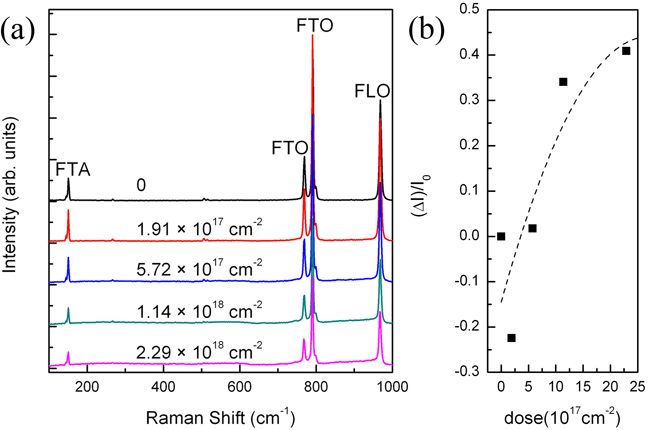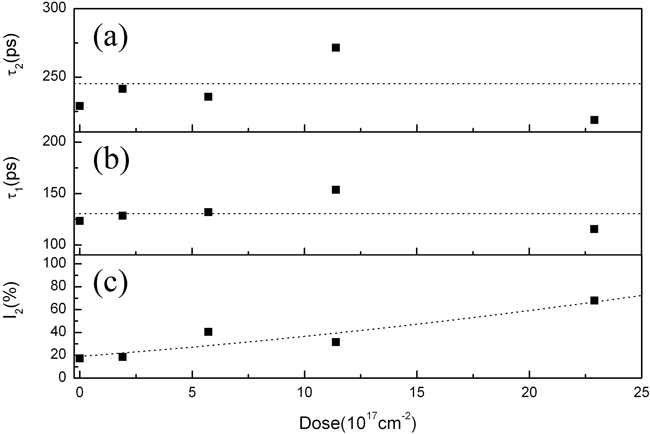The origin of magnetism in wide band-gap semiconductors
Date:22-03-2011 Print
The charge and spin are two intrinsic properties of electron. Electronic devices mainly utilize the charge of electrons, while mass storage devices are based on the spin of electrons. Diluted magnetic semiconductors provide the opportunity for us to use the charge and spin of electrons simultaneously, which may bring revolutionary changes in the information technology. Progresses have been achieved in the preparation of magnetic wide band-gap (WBG) semiconductors with Curie temperatures at around room temperature by dopings. However, limited solubility of transition metals (TM) in WBG semiconductors often leads to the precipitation of second phases, thwarting the attempts to get the unambiguous experimental results. Recently, there has been increasing evidence that traditional magnetic elements are not the sole source in inducing intrinsic magnetism. The effect of defects on magnetism formation is gradually being realized.
Prof. Xiaolong Chen and his colleagues from the Institute of Physics, Chinese Academy of Sciences have been focusing on the origin of magnetism in WBG semiconductors for many years. Early research demonstrated that Mn is not the only source to determine the magnetic ordering in SiC:Mn [Appl. Phys. Lett. 94, 102508 (2009)]. Subsequently, ferromagnetism was induced in SiC and BN by non-TM element dopings [J. Am. Chem. Soc., 131, 1376 (2009) and Phys. Rev. B 80, 153203 (2009)]. Based on the results mentioned above, Yu Liu, Gang Wang, Xiaolong Chen in collaboration with other groups have carefully investigated the magnetism of neutron irradiated SiC single crystals. The results unambiguously verified that defects can induce magnetism. The intentionally created defects dominated by divacancies (VSiVC) are responsible for the observed magnetism. The results implied the possibility of tuning magnetism of WBG semiconductors by defect engineering. This work was published on Phys. Rev. Lett. 106, 087205 (2011).
Raman spectra in Fig. 1(a) show the patterns of SiC crystals irradiated similar to that of the pristine one. Fig. 1(b) displays the relative intensity variation of the folded longitudinal optical mode, suggesting the existence of defects or lattice damages in the irradiated samples. Positron annihilation lifetime spectroscopy measurements in Fig. 2 confirm that VSiVC is created by neutron irradiations and its concentration is enhanced by increasing dose. Figure 3 shows the magnetization of irradiated and pristine samples. The magnetic order gradually enhances with increasing irradiation dose. Finally, a distinct hysteresis loop with ferromagnetic features can be seen. The similar variations of the divacancy concentration and the saturation magnetization with increasing irradiation dose suggest that the magnetism in neutron irradiated SiC is closely associated with VSiVC. The spin-resolved density of states [see Fig. 4(a)] shows 2.0 μB to each VSiVC. The extended tails of the defect wave functions shown in Fig. 4(b) induce the long-ranged coupling between the moments. At last, the relation between magnetic order and charge states was further discussed.
This work was partly supported by MOST, NSFC and BMSTC.
 |
| Figure 1 (a) Raman spectra from 100 cm-1to 1000 cm-1for irradiated and pristine SiC samples. (b) The relative intensity of the folded longitudinal optical mode versus irradiation dose. The dash line is a guide to the eyes. |
 |
| Figure 2 Fitted results of τ2(a),τ1(b) and I2(c) as functions of irradiation dose. τ1and τ2are found to be independent of dose. I2is proved to have positive correlation with dose. The dotted line shows the average values in (a) and (b) while is a guide to the relationship between I2and irradiation dose in (c). |
 |
| Figure 3 (a) The magnetization measured at T = 5 K as a function of magnetic field in the range -5 KOe < H < 5 KOe for irradiated and pristine SiC samples. (b) The magnified hysteresis loop for the sample with dose of 2.29 × 1018n/cm2at T = 5 K. (c) The magnetic signals with (black) and without (red) the DM contribution in low magnetic field range for the sample with dose of 2.29 × 1018n/cm2at T = 300 K. |
 |
| Figure 4 (a) Spin-resolved DOS of a neutral VSiVCin a 192-atom SiC supercell. The spin polarization leads to a splitting between two kinds of spin states. (b) Isosurface charge density plot (isovalue is 0.02 e/?3) of the total spin states about a neutral VSiVCin a 192-atom SiC supercell, showing both the localized nature and the extended tails of the defect wave functions. Si atoms are shown in yellow and C atoms in gray. Arrows indicate the location of VSiVC. |

